HydroFlex Plenary Meeting May 2019
Summary of Popular Science Presentations
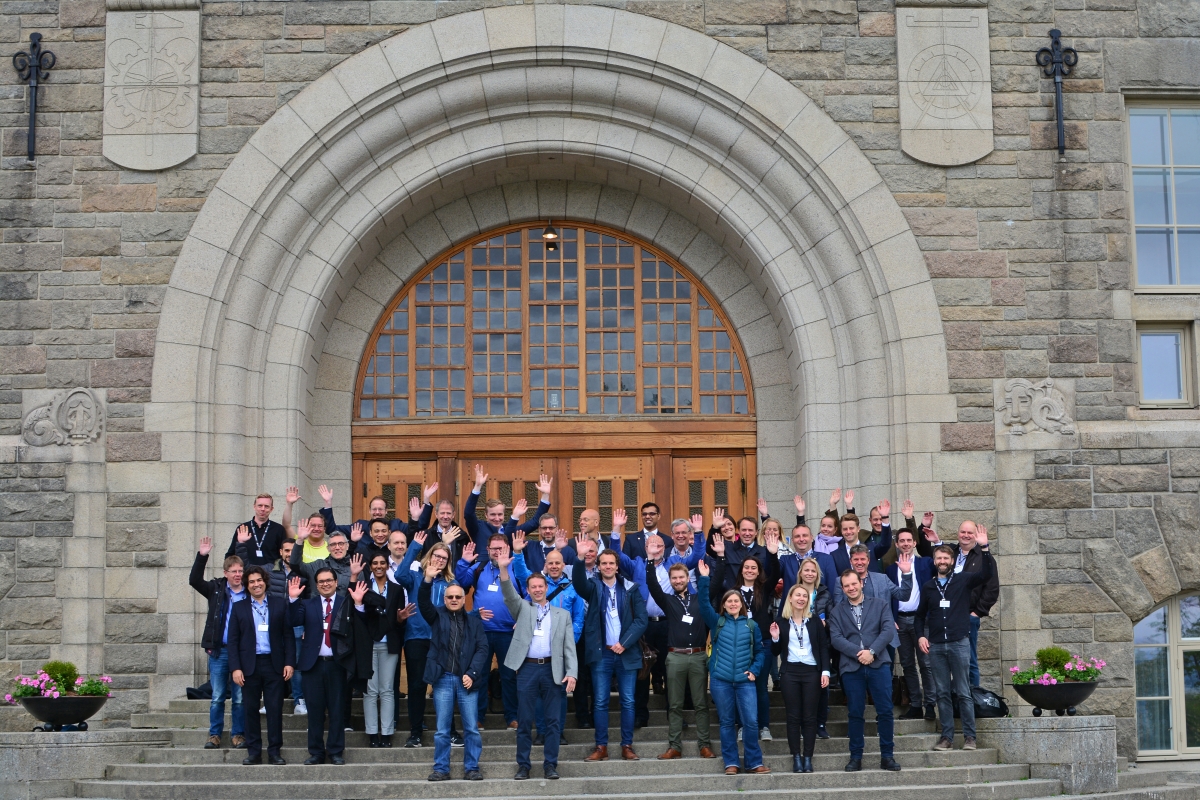
Photo: Lars Robert Bang, NTNU
At the end of May 2019, HydroFlex researchers gathered in Trondheim, Norway for the HydroFlex plenary meeting and public workshop. The plenary meeting, held on May 27’th, close to one year after the initial kick-off meeting, was an opportunity for all the research teams to update each other on the progress of the various work packages.
It is a common challenge for large, multidisciplinary and geographically spread out projects, such as most Horizon 2020 projects, that each researcher and team is isolating their view to one discipline and one work package. Thus, the plenary meeting is an important social and scientific meeting place to ensure collaboration across teams and work packages.
A common language and a common understanding of key challenges for the different teams is important for enabling a good collaboration between the teams. Thus, in addition to the mandatory presentation on the progress for each work package, the program for the day included a number of “popularized” presentations. Popularized is here shown in quotations as one of the feedbacks after the day was that due to the wide range of scientific fields, some of the presentations, even if considered popularized by the presenter, still were too narrow and specialized to really convey their full meaning to the whole audience.
Flexibility in the European Power System
The first popularized presentation was Flexibility in the European power system – Focus: Frequency Stability, presented by Marius Siemonsmeier, Institute of Power Systems and Power Economics, RWTH Aachen University. Following a general introduction about the status on the European energy transition and role of hydropower, he proceeded with a discussion on the general concept of flexibility.
Fundamentally, the origin of the focus on flexibility in the power system is the requirement of continuous balance between supply and demand in the grid. Any imbalance, if persisting, will unavoidably lead to deviation in the system frequency and degradation of the quality of service. Being an equilibrium condition, both sides of the balance can be manipulated (adjusted) to restore the balance.
Demand side flexibility, where consumers adjust their consumption is being explored in most European countries, both in research projects, development of aggregator functions as well as modification of the consumer rates. Further development of smart metering, smart appliances and electric vehicles will probably increase the importance of demand side flexibility. The counterpoint to demand side flexibility is production flexibility, which will be discussed more in detail below.
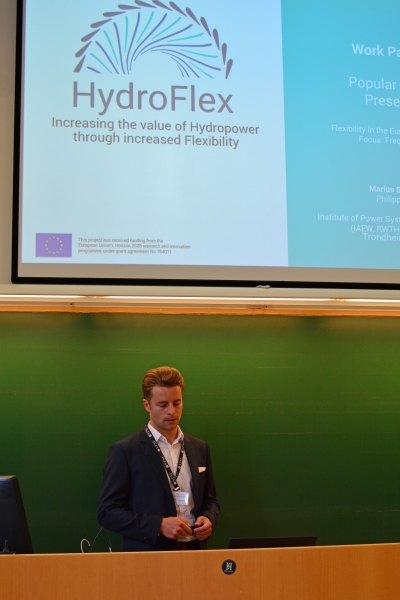
Photo: Lars Robert Bang, NTNU
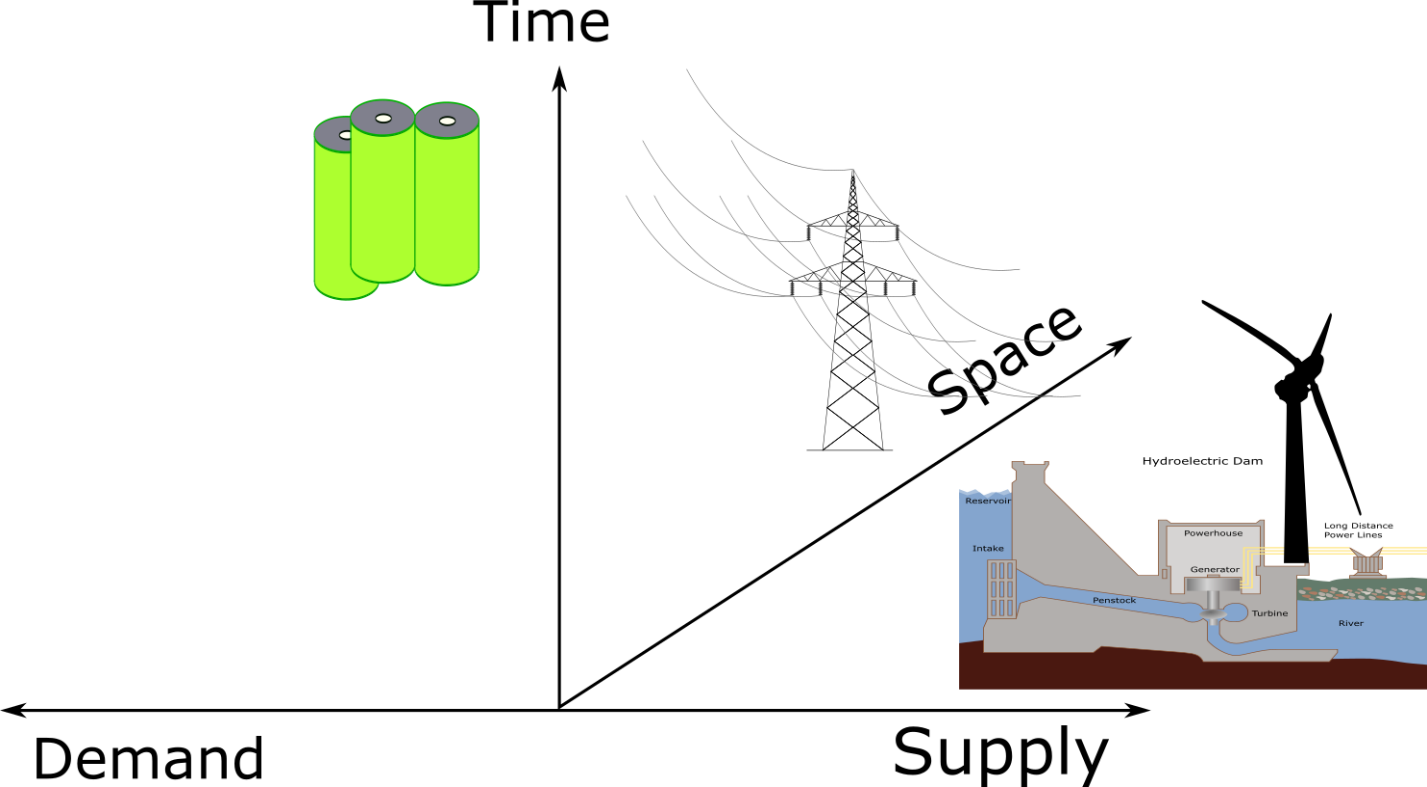
Figure 1: Flexibility in a segregated power market
A different perspective of the flexibility issue is the geographic scale. Increasing the extent and capacity of interconnectors, raises the probability that regional imbalances may be in opposite phase (e.g. production surplus in one region can be used to balance deficits in another region). Consequently, the flexibility question becomes coupled to the challenges seen many places to gain public acceptance for grid expansion projects.
Considering energy storage permits the possibility to view flexibility across time. This is an important topic related to the HydroFlex project and hydropower in general. Hydropower plants with reservoir and pumped storage (PS), comprise the largest energy storage capacities in Europe today and is expected to do so for a long time, despite development of battery storage, hydrogen storage and compressed air storage (CAS).
Adjustment of generation is still the principle means of providing flexibility services and the core topic of the HydroFlex project. In this context, understanding the time scales of flexibility is important. These range from millisecond responses due to electrical faults all the way to yearly and even decade scale changes due to economic, technological and population development. Different mechanisms have evolved to cope with this range of time scales.
Physical requirements, commonly imposed by TSOs, related to protection settings, requirement to inertia and turbine governor parameters and performance characteristics of voltage regulator are used to secure the shortest time scales. Intra-day markets and day ahead markets are used to balance the hourly and diurnal variation, and financial markets (future markets) are put in place to balance the intermediate scale. The long-term development, such as grid development plans and capacity expansions, resides in the borderland between the TSO-level, regulatory bodies as well as political decision. Nevertheless, in a commercial, deregulated power market, reliable predictions regarding the types of markets that will exist in the future as well as reliable prediction of future pricing is critical for anyone considering investment in new.
During the last decades, several models for predicting wholesale electricity prices have been developed. The models vary in time resolution and geographical resolution but are in general based on minimizing the cost of producing the predicted consumption in a future time interval. Models to predict future prices for flexibility services have so far been quite limited. Within the HydroFlex WP2, a novel approach for investigating flexibility requirements is under development. The basic principle is to combine a traditional market model with a detailed simulation of failure events. For each hourly equilibrium load, failure events are injected, and a time domain simulation is performed in order to see if the system is able to stabilize itself again and the required dynamic response of the hydropower plants in the system. Initial results are encouraging, but there remains significant development and testing before concluding.
Flexibility of Hydraulic Turbines
The second popularized talk had the title “Flexibility of Hydraulic Turbines – A Parametric Design Tool” and was presented by Maria Rolstad Jordal, EDR Medeso, Norway. This work is part of work package 3 (WP3). The overall goal of work package 3 is to develop a new hydraulic design for a Francis turbine operating at variable speeds, test it and create a software for turbine lifetime estimation. A step in this process is to create numerical analysis to investigate the flow and stresses in the turbine to assure optimal geometry. A computer analysis must take into consideration the fluid dynamics (CFD) and structure (FEA) for the turbine in an iterative way. Maria Rolstad Jordal presented their finished automatic turbine geometry generator which can create a hydraulic blade design. Further, tools used for analysing the results with respect to hydraulic efficiency and structural integrity was presented. The next step for the team is to combine the CFD and FEA by using CFD calculation.

Photo: Lars Robert Bang, NTNU
Modelling platform for control design purposes and large-scale power system studies
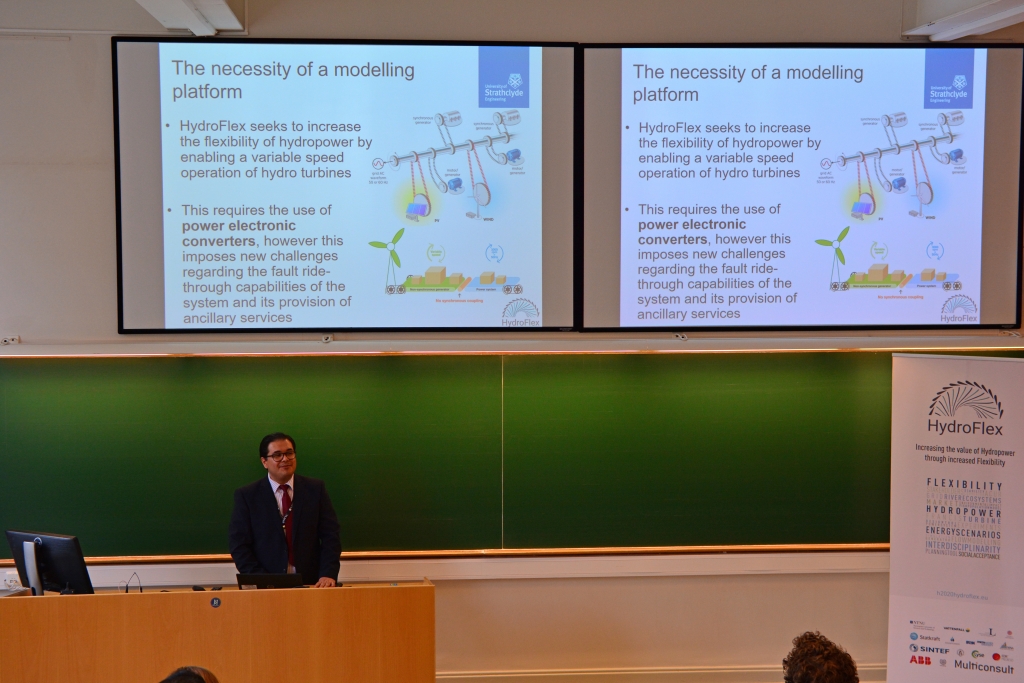
Photo: Lars Robert Bang, NTNU
The third popularized talk was Modelling platform for control design purposes and large-scale power system studies, presented by David Campos-Gaona who currently holds a Postdoc position at the University of Strathclyde. This work is part of work package 4. The overall goal of work package 4 is to investigate how the electrical system in a power plant can be designed and developed to improve supply of system services. This ranges from system level models down to investigate impact on generator insulation system. In order to test out different control algorithms for frequency converters and possibly other power electronics components, a generic network model has been defined. The model system comprises two production areas connected via a common bus (transmission line). Area 1 has an installed capacity of 3100 MW, including a 400 MW hydropower plants, two gas turbines with together 1100 MW and one back to back converter of 100 MW. The load inside area 1 is 300 MW. Area 2 consists of a 1500 MW generic production and a 1200 MW load. The remaining load is taken on the common bus. The model also includes a quite detailed model for the back to back converter, split into a machine side converter controller and a grid side converter controller.
A trip on the 600 MW gas turbine leads to significant loss of production and the system response can be simulated for the different remaining components. Likewise, a three-phase fault in area 2 can be injected and the system response in area 1 can be determined from the dynamic model. The reference system is currently implemented in Matlab/Simulink but can in principle also be implemented in other modelling tools or frameworks
Hydraulic Models
The last popularized talk Hydraulic Models in Nidelva and Ume Rivers was presented by Ana Juarez, NTNU Norwegian University of Science and Technology, and Anton Burman, Luleå University of Technology (LTU). This work is part of task 5.2 “Flow Scenario Modelling,” which aims to derive the impact of flexible hydropower – 30 starts and stops per day – in the reach downstream of the power plant outlets where the larger flow fluctuations occur. Such an evaluation of environmental impact requires models which can simulate water levels, temperatures and velocities in the two rivers.
Researcher Ana Juarez presented the hydraulic model for Nidelva, developed at the Department of Civil and Environmental Engineering at NTNU using the HEC-RAS 2D computational tool. PhD Candidate Anton Burman presented the model of Ume river, developed at the Division of Fluid and Experimental mechanics at LTU using the Delft3D and HEC-RAS 1D computational tools. These two models have been run by current scenarios and tested against different validation data. The results show that the models are calibrated reasonably well for the purpose of the study of environmental impact in HydroFlex. Still, more simulations and measurements are planned for Ume river.
The hydraulic models of these two rivers will be used to evaluate the environmental impact of flexible hydropower related to different scenarios, with and without mitigation measures, such as Air Cushion Underground Reservoir (ACUR), applied.

Photo: Lars Robert Bang, NTNU

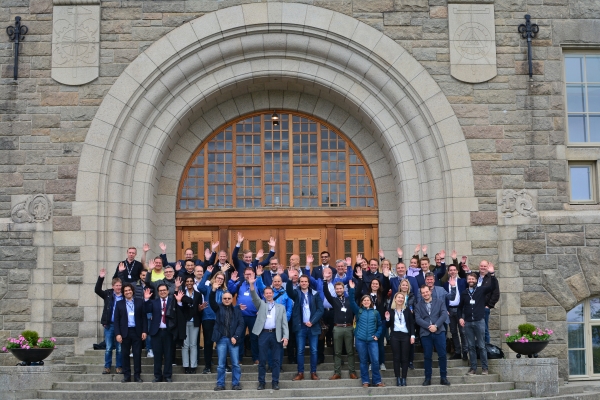
Leave A Comment